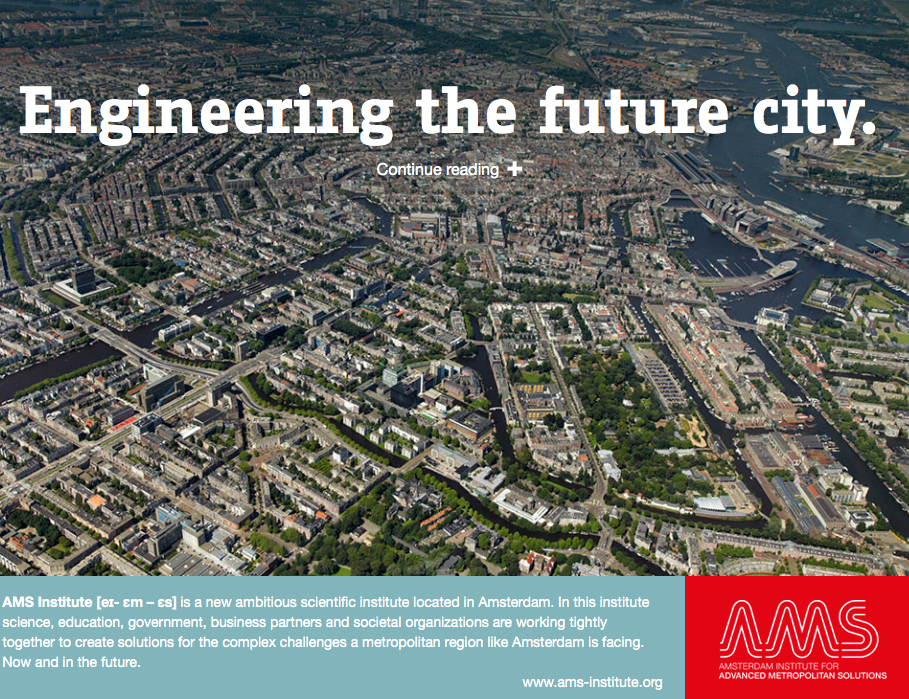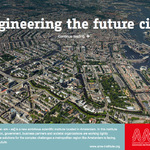With the transformation of the welfare state into a participatory network society and sharing economy, rhythms adapt constantly (Nevejan & Brazier 2011) . As a result people adapt their movements and way of doing things. Because big data offer new kinds of real time feedback, citizens find new modes of organising themselves. For example TomTom®indicates current traffic jams and AirbnB® for example changes the way tourists visit cities. They stay longer, spend more in local neighbourhoods, and cause rhythms in neighbourhoods to oscillate.
Rhythms are patterns that move through space and time. Rhythm is the variation in repetition in specific context (Huijer 2015). Previous research indicates that shared rhythm has a high impact on citizen’s sense of safety. It deeply affects urban life (Lefebre 2004). The scientific challenge is (1) to identify and correlate different rhythms in large data sets, (2) to make (through visualization of data rhythms) these complex data understandable for lay people, (3) to create a rhythmic simulation that offers rhythm analyses for possible intervention.
In a 24/7 economy no rhythm is given, while for people rhythm is fundamental to survival and well-being (Damasio 2004, Nevejan 2007). The relation between the space of places (offline reality) and the space of flows (online reality) is unclear (Castells 2011). This research anticipates that rhythm is one of the dynamics that connects these two spaces. Rhythm defines our physical well-being, it defines our day-to-day aesthetic experiences (Dewey 1934) and defines how people engage (Gill 2015). With the many data that are collected in network societies new paths of policymaking by using these data in significant ways open up (Helbing 2015). This research explores rhythm as a perspective for working with physical and large dataset in relation to one another.
In education, in healthcare, in transport, in energy management and in many other sectors rhythm is fundamental to smooth organization and satisfactory interaction. Rhythmic design, beyond functional requirements of specific services, contributes to more balanced societal interactions, to a higher sense of safety of those involved. It is argued to be a new field of the social sciences (Michon 2016) Also in daily personal practice, one can argue that rhythm feels like free energy, anything in tune with a rhythm requires less energy to accomplish. This study explores if and how rhythm is core to processes of emergence in social and architectural contexts (Nevejan & Brazier 2012, Sefkatli 2016). Outcomes of this research indicate how rhythms can be communicated, it indicates what happens when rhythms are disrupted and it indicates how rhythmic interventions can benefit societal cohesion.
City Rhythm is an explorative ‘research through design’ project (Zimmerman et al 2010) that studies shared rhythm in neighbourhoods for improving the sense of safety of residents in those neighbourhoods. City rhythm identifies and correlates a variety of rhythms in the social, ecological and technological domain. Through interviews, observation and analysis of the City Council datasets, rhythms are identified which affect people’s sense of connectedness, trust and safety (Nevejan & Brazier 2015, Gill 2015). These rhythms are then visualized.
Rhythms of energy use, transport, schools, ICT data, garbage collection, opening hours of shops and businesses, people who walk their dog, and many more are studied and selected to be made tangible and understandable in relation to each other so that lay people can understand.
Eventually this explorative study focuses on identifying how rhythms can be manipulated for a better understanding of possible interventions to enhance shared rhythms that support social cohesion in specific neighbourhoods and improve people’s sense of safety (Den Hengst, De Jong, Nevejan, Brazier 2017).
In this research project we identify the most significant datasets and data acquisition for the identification of shared rhythms (1). We study how police, city councils and citizens can manipulate these rhythms (2). We introduce a first sketch of a method of rhythm analyses for specific neighbourhoods to become aware of the rhythms people share and identify possible interventions to improve shared rhythm (3).
The research will be conducted in and with the DataLab of the City of Amsterdam. Amsterdam contributes with its over 900 datasets, Wageningen University contributes its specific research into spatial data. TU Delft is project leader and creates the simulation and studies with artistic and design partners and with students how these data can be unfolded to make sense to lay people, offer policy analyses and identify interventions for rhythmic design.
The Digitale Steden Agenda, an initiative of Dutch City Councils G4 and G32, has organized five other cities in the Netherlands to assist in financing and validating the research: Zaanstad, Helmond, Rotterdam, Den Haag en Zoetermeer.
Deliverables of the research are:
- Explorative methods and tools for identifying rhythms in physical and data realities
- Better understanding of how large datasets indicate rhythms and break of rhythms
- A first understanding of how rhythmic interventions can become part of policymaking
- A pilot simulation in which shared rhythm can be manipulated.
- Opening conference and workshops on City Rhythm for stakeholders involved
- Several workshops between administrators, professors, designers, students and artists.
- A publication of the research trajectory and results for stakeholders and their city council members.
- A closing conference in which results are presented
- A larger research proposal with national and international partners.
For the different cities this research creates new perspectives on the use of large datasets for policymaking and urban planning. The pilot-simulation offers new ways of analysis of problematic situations as well as exploration of rhythm as a driver in design processes of to be developed areas.
The project creates the foundation for a new set of tools for policymaking and urban planning based on rhythmic intervention and design. Such tools are of interest to a variety of future clients. During the research new data sets are acquired and/or modified for being used in relation to one another, in this case in a rhythmic simulation of a neighbourhood. Outcomes will be of benefit to the open data platform. Also, outcomes are expected to offer new ways of data analyses.
In scientific papers we report on the identification of the significant rhythms in specific neighbourhoods, the process of making complex data available to lay people and the initial framework of rhythm analyses we aim to develop.
Below you find the formal AMS proposal.

